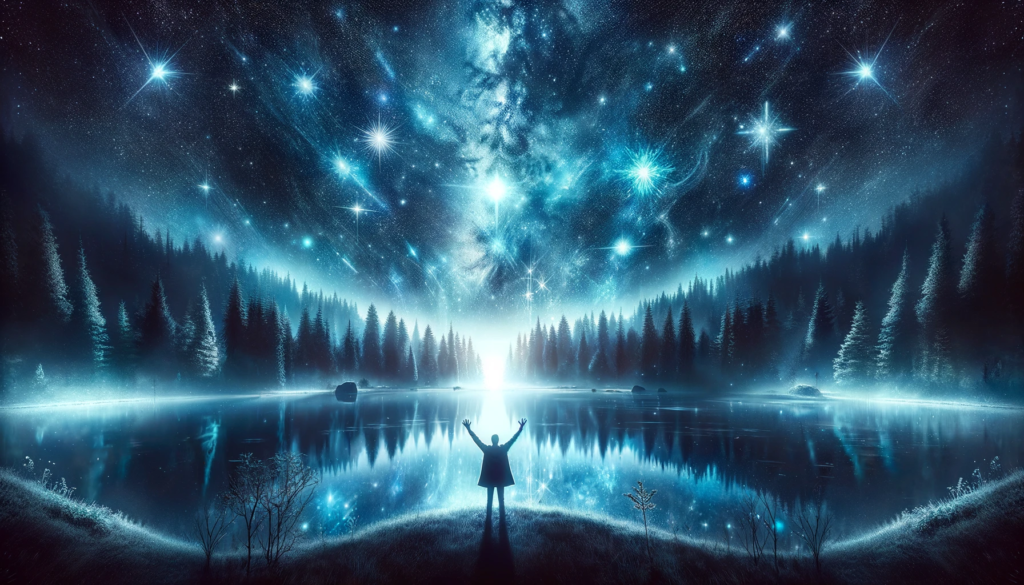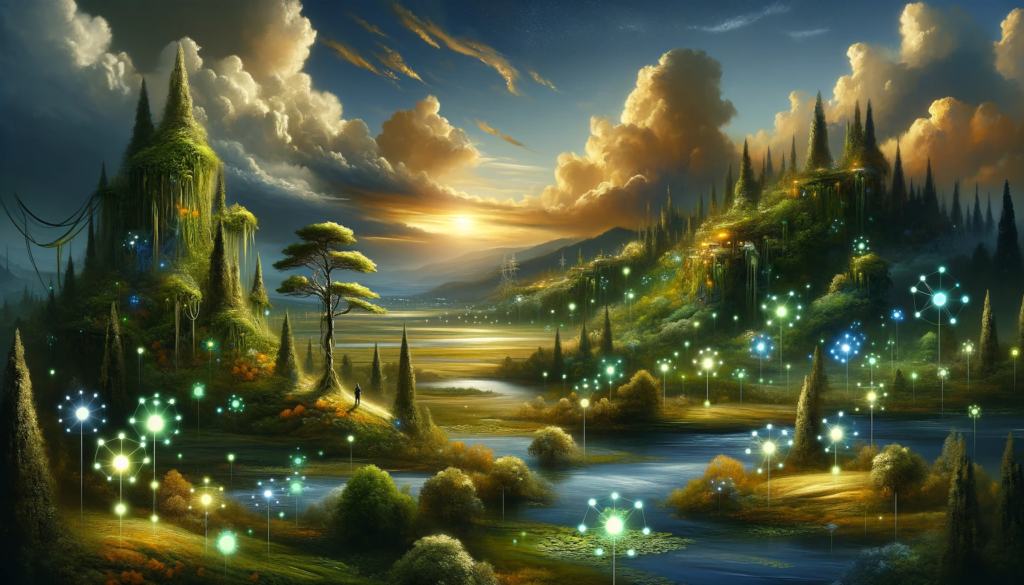The vernal equinox, also known as the spring equinox, is a pivotal moment in the Earth’s annual journey around the sun. Occurring around March 20th or 21st in the northern hemisphere, this celestial event holds deep significance for both astronomers and cultures around the world. As the Earth orbits the sun, its axis remains tilted at an angle, causing the changing seasons. During the vernal equinox, however, the tilt of the Earth’s axis is such that the sun appears directly above the equator, resulting in equal lengths of day and night. This delicate balance of light and darkness symbolizes the transition from the cold, dark days of winter to the vibrant, sunlit days of spring.
The vernal equinox has long been observed and celebrated by various cultures throughout history. In ancient times, people recognized the return of longer days and warmer weather as a sign of hope and renewal. They believed that the Earth herself was awakening from her slumber, ready to burst forth with new life. Rituals and ceremonies were performed to honor this momentous occasion, often involving bonfires, feasts, and the planting of seeds. These traditions served as a way to connect with the cycles of nature and express gratitude for the bountiful gifts it provided.
Today, the vernal equinox continues to captivate our imagination and inspire us to embrace the changing seasons. Astronomers study this event to gain a deeper understanding of the Earth’s orbit and its relationship to the sun. They meticulously calculate the exact moment when the sun crosses the celestial equator, marking the official start of spring. This scientific precision adds to the awe and wonder that surrounds the vernal equinox, reminding us of the intricate mechanisms that govern our planet’s existence.
Beyond its scientific significance, the vernal equinox holds a metaphorical meaning as well. It serves as a reminder that life is cyclical, with periods of growth and renewal following periods of rest and introspection. Just as the Earth awakens from its winter slumber, we too have the opportunity to awaken our own spirits and embrace the possibilities of a new season. It is a time to shed the heaviness of the past and embrace the lightness and vitality of the present moment.
As we witness the vernal equinox each year, let us be reminded of the interconnectedness of all living things and the beauty that can arise from balance and harmony. Let us take a moment to pause and appreciate the delicate dance between light and darkness, knowing that it is through this dance that life is sustained and renewed.
Throughout history, civilizations have recognized the significance of the vernal equinox and have celebrated it in various ways. The celestial dance between the Earth, the sun, and the moon has captivated the human imagination and inspired countless myths, legends, and rituals.
For agricultural societies, the vernal equinox marked the beginning of a new season, signaling the end of winter and the arrival of spring. Farmers would carefully observe the position of the sun and the lengthening of daylight hours to determine the optimal time for planting crops. In many cultures, this celestial event was associated with fertility and rebirth, as the Earth awakened from its winter slumber and burst forth with new life.
Spiritually, the vernal equinox has held profound significance for numerous belief systems. In ancient Egypt, the equinox was linked to the resurrection of Osiris, the god of the afterlife. The ancient Greeks celebrated the festival of Dionysus, the god of wine and fertility, during this time, marking the rejuvenation of nature and the abundance of the harvest to come. In Hinduism, the vernal equinox is celebrated as Holi, a vibrant festival of colors that represents the triumph of good over evil.
But the vernal equinox is not just a time of celebration; it is also a time of reflection and introspection. As day and night stand in perfect balance, it serves as a reminder of the delicate equilibrium that exists in the natural world. It prompts us to consider the interconnectedness of all things and our place within the grand tapestry of the universe.
Today, as we continue to advance technologically and explore the mysteries of the cosmos, the vernal equinox remains a source of wonder and inspiration. Scientists study the intricate mechanics of the Earth’s orbit and the precise alignment of celestial bodies, deepening our understanding of the universe. Meanwhile, individuals from all walks of life gather at ancient sites and modern observatories to witness the celestial dance firsthand, marveling at the beauty and complexity of our world.
Indeed, the vernal equinox is not merely a scientific phenomenon or a relic of ancient history; it is a timeless reminder of our shared humanity and our enduring connection to the cosmos. As we stand on the cusp of a new season, let us embrace the spirit of the equinox and strive for balance, harmony, and renewal in our lives.
As the days lengthen and the temperatures rise, people around the world embrace the opportunity for personal growth and transformation. This season of awakening and renewal becomes a time for self-reflection and setting intentions for the year ahead. Just as the seeds in the earth begin to sprout and reach towards the sun, individuals too feel a stirring within them, a desire to shed old habits and embrace new possibilities.
For many, this season brings a sense of optimism and hope. The longer days and warmer weather create an atmosphere of energy and possibility. It is a time to let go of the past and embrace the present moment, to release any lingering negativity and welcome in a fresh perspective. Just as the natural world bursts forth with vibrant colors and fragrant blossoms, so too can individuals experience a blossoming of their own potential.
During this season of renewal, ancient traditions and modern celebrations intertwine. Festivals and rituals that have been passed down through generations take on new meaning as they are adapted to fit the needs and desires of contemporary society. Whether it is the colorful and joyous celebrations of Nowruz or the solemn and reflective observances of Easter, these cultural expressions serve as reminders of the cyclical nature of existence and the power of transformation.
Nowruz, in particular, is a celebration that embodies the spirit of the equinox. Families gather together to mark the beginning of the new year, feasting on traditional foods and exchanging gifts. It is a time to put aside differences and come together in unity and harmony. The symbolism of Nowruz resonates deeply with the natural world, as it represents the triumph of light over darkness and the triumph of life over death.
Similarly, Easter holds a special place in the hearts of millions around the world. The resurrection of Jesus Christ is seen as a powerful symbol of rebirth and new life. Just as the earth awakens from its winter slumber, so too does the spirit of humanity awaken to the possibilities of redemption and transformation. The themes of Easter, like those of the equinox, remind us that no matter how dark the night may be, there is always the promise of a new dawn.
As the vernal equinox marks the beginning of a new season, it also serves as a reminder of the interconnectedness of all things. The natural world and human culture are intrinsically linked, and both are shaped by the cycles of life and death. The arrival of spring brings with it a sense of renewal and hope, a reminder that even in the face of adversity, there is always the potential for growth and transformation.
The Scientific Significance
From a scientific perspective, the equinox is a cornerstone in our understanding of the Earth’s axial tilt and orbit, pivotal for comprehending the changing seasons and the fundamental workings of our planet’s climate system. The precision with which ancient astronomers could predict the equinox underscores the remarkable human capacity for observation and innovation, a legacy that continues to expand under the scrutiny of modern science.
Moreover, the equinox invites introspection about our place within the natural order and the impact of our actions on the Earth. It’s a time for contemplating the fragile balance of our environment and the importance of living in harmony with the rhythms of the planet. As the equinox marks a renewal of the Earth’s bounty, it also calls for a renewal of our commitment to environmental stewardship and sustainability.
As we delve deeper into the scientific significance of the equinox, we uncover its role in unraveling the mysteries of celestial mechanics. The equinox occurs when the Earth’s axis is neither tilted towards nor away from the sun, resulting in equal lengths of day and night. This phenomenon is a direct consequence of the Earth’s elliptical orbit around the sun and its axial tilt of approximately 23.5 degrees. Understanding this intricate dance between the Earth and the sun provides crucial insights into the cyclical patterns that govern our climate.
By studying the equinox, scientists can refine their models and predictions of climate change, helping us comprehend the long-term consequences of human activities on our planet. For instance, the equinox serves as a reference point for tracking shifts in the Earth’s axial tilt, which can have profound effects on our climate system. Changes in the tilt can alter the distribution of solar energy across the globe, leading to shifts in temperature and precipitation patterns.
Furthermore, the equinox is an opportunity for astronomers to study the intricate interplay between the Earth, the sun, and other celestial bodies. During the equinox, the sun appears to rise directly in the east and set directly in the west, creating a unique alignment with the Earth’s equator. This alignment allows scientists to measure the Earth’s rotation and precisely determine its position in space.
Additionally, the equinox serves as a touchstone for cultural and historical traditions around the world. Ancient civilizations, such as the Mayans and Egyptians, developed elaborate calendars based on the equinox to track agricultural cycles and plan religious ceremonies. Even today, many cultures celebrate the equinox with festivals and rituals that honor the balance between light and darkness, symbolizing the eternal cycle of life and death.
In conclusion, the equinox holds immense scientific significance, providing invaluable insights into the Earth’s climate system, celestial mechanics, and cultural heritage. It serves as a reminder of our interconnectedness with the natural world and the responsibility we have to protect and preserve it for future generations.
The vernal equinox, also known as the spring equinox, marks the beginning of spring in the northern hemisphere. It is a time when the sun crosses the celestial equator, and day and night are of equal length. This celestial event holds great significance in various cultures and religions, symbolizing the triumph of light over darkness, warmth over cold, and life over death.
Throughout history, the vernal equinox has been celebrated in different ways across the globe. Ancient civilizations such as the Mayans, Egyptians, and Persians revered this event and built magnificent structures aligned with the sun’s rays during this time. These structures, like the famous Mayan pyramid of Chichen Itza, were designed to capture the sun’s light and cast a shadow that resembled a serpent slithering down the steps, symbolizing the rebirth of life.
Today, the vernal equinox continues to be celebrated in various forms. In many cultures, it is a time for feasting, dancing, and performing rituals to welcome the arrival of spring. People gather in parks, gardens, and sacred sites to witness the sunrise and connect with the natural world. Some engage in spring cleaning, symbolically clearing out the old to make way for the new. Others plant seeds in their gardens, symbolizing the growth and potential that lie ahead.
Beyond its cultural and religious significance, the vernal equinox holds a deeper meaning for humanity. It serves as a reminder of the cyclical nature of life, the constant flux of the universe, and the interconnectedness of all beings. Just as the earth experiences seasons of growth, dormancy, and rebirth, so do we as individuals. The vernal equinox invites us to reflect on the past, release what no longer serves us, and embrace the opportunities for growth and transformation that lie ahead.
As we stand on the threshold of spring, we are reminded of the resilience and adaptability of life. The vernal equinox is a symbol of unity, as it brings people together to celebrate the beauty and abundance of the natural world. It is a time to renew our connection with the earth, to honor the cycles of life, and to cultivate a sense of harmony within ourselves and with the world around us.










